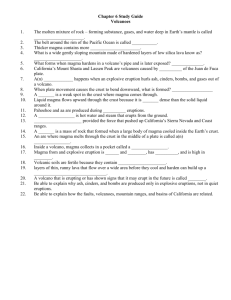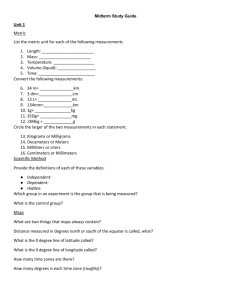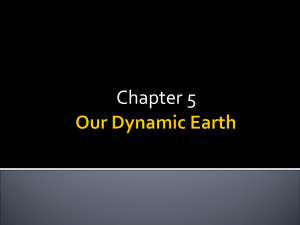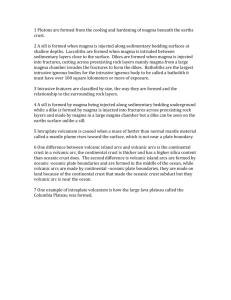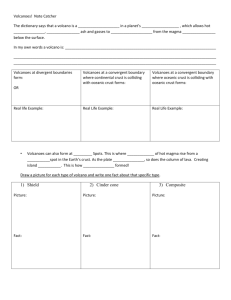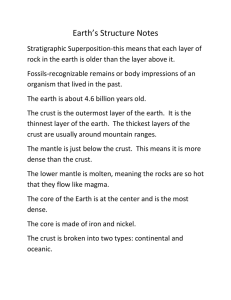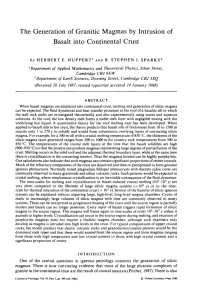Magma Genesis at Destructive Boundaries
advertisement
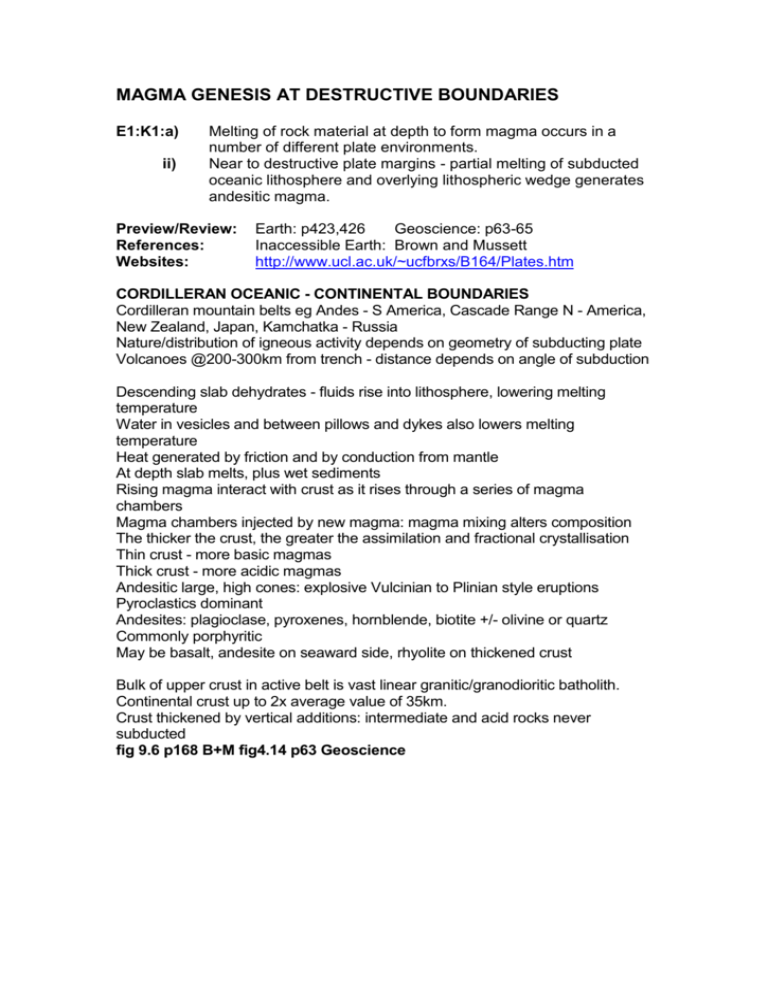
MAGMA GENESIS AT DESTRUCTIVE BOUNDARIES E1:K1:a) ii) Melting of rock material at depth to form magma occurs in a number of different plate environments. Near to destructive plate margins - partial melting of subducted oceanic lithosphere and overlying lithospheric wedge generates andesitic magma. Preview/Review: References: Websites: Earth: p423,426 Geoscience: p63-65 Inaccessible Earth: Brown and Mussett http://www.ucl.ac.uk/~ucfbrxs/B164/Plates.htm CORDILLERAN OCEANIC - CONTINENTAL BOUNDARIES Cordilleran mountain belts eg Andes - S America, Cascade Range N - America, New Zealand, Japan, Kamchatka - Russia Nature/distribution of igneous activity depends on geometry of subducting plate Volcanoes @200-300km from trench - distance depends on angle of subduction Descending slab dehydrates - fluids rise into lithosphere, lowering melting temperature Water in vesicles and between pillows and dykes also lowers melting temperature Heat generated by friction and by conduction from mantle At depth slab melts, plus wet sediments Rising magma interact with crust as it rises through a series of magma chambers Magma chambers injected by new magma: magma mixing alters composition The thicker the crust, the greater the assimilation and fractional crystallisation Thin crust - more basic magmas Thick crust - more acidic magmas Andesitic large, high cones: explosive Vulcinian to Plinian style eruptions Pyroclastics dominant Andesites: plagioclase, pyroxenes, hornblende, biotite +/- olivine or quartz Commonly porphyritic May be basalt, andesite on seaward side, rhyolite on thickened crust Bulk of upper crust in active belt is vast linear granitic/granodioritic batholith. Continental crust up to 2x average value of 35km. Crust thickened by vertical additions: intermediate and acid rocks never subducted fig 9.6 p168 B+M fig4.14 p63 Geoscience ISLAND ARC OCEANIC-OCEANIC BOUNDARIES a) Smaller volumes of intrusives b) Extrusive rocks predominate c) Explosive due to phreatic action and high volatile content Descending slab dehydrates - rising fluids initiate partial melting Islands built up by successive eruptions Thickening of crust slows rise of magma - more time for fractional crystallisation Subducted material = upper 5-10km basaltic crust overlying depleted peridotite. Peridotite unlikely to melt because it is already a residuum. Basaltic oceanic crust metamorphoses to amphibolite. High geothermal gradients - melts to give andesitic magma + depleted eclogitic residue. Lower geothermal gradients - release of hot volatiles leading to partial melting of overlying mantle + quartz eclogite residue. Silica enrichment by melting of wet siliceous sediments. Rising magma 1000'C melts some surrounding crust - becomes more acidic. Cooling - fractional crystallization - acidic residual liquids Lower crustal rocks dry - insufficient temperatures for spontaneous melting. Subducted plate initiates melting as rising body of hot magma leads to partial melting of lower crust 35-40kkm- 600'C- 10,000 atmospheres. Batholiths formed by series of teardrop shaped plutons. Rate of crustal accretion has varied through geological time; slower now than in past. Igneous rocks above subduction zones vary considerably in composition. Increasing age Deeper magma source Increasing acidity Increasing ratio of intrusive material Increase in %potassium K 1 Young arcs - South Sandwich, Marianas, Tongas: Basalts, Basalt-andesites. 2 Intermediate - West Indies, Central America, New Zealand, Indonesia, Japan: Calc-alkaline andesites + dioritic + granodioritic intrusives. 3 Mature arcs - Andes, Rocky Mountains: Intrusive rocks predominate - gabbro - granodiorite - adamellite. fig 9.13 p177 B+M. ESTA GEOTREX The Geology Teachers Resource Exchange Contributor: Ben Church Establishment: Monmouth Comprehensive School Date:24:05:05
